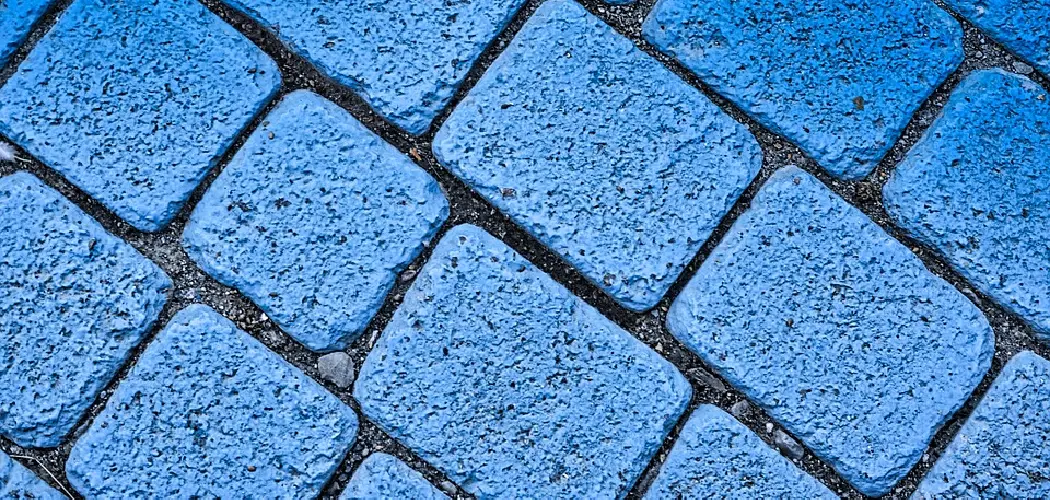Are you looking to add a splash of color to your home’s exterior walkway or garden? Painting pavers is an easy and cost-effective solution that can give you the look of an expensive stone for less.
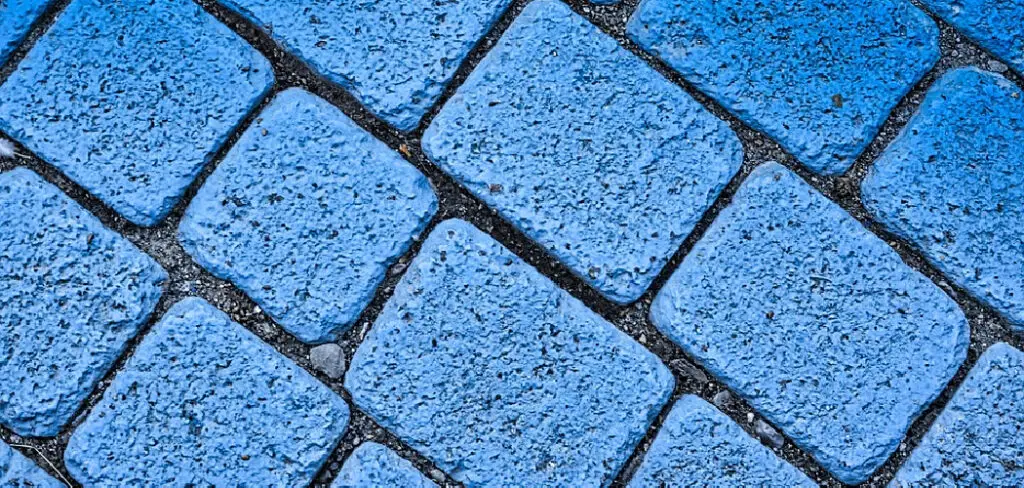
With just a few simple steps, you can quickly transform dull gray or tan concrete pavers into vibrant blocks of color that will brighten up any outdoor area. In this blog post, we’ll discuss how to paint pavers a different color and what materials are needed in order to achieve the best results. So if you’re ready to tackle this DIY project, keep reading!
Can Pavers Be Painted a Different Color?
Yes, pavers can be painted a different color. Painting your pavers is a great way to give them an updated and modern look. Not only will the new color brighten up your outdoor space, but it can also easily match any décor or theme you may have in mind for your backyard.
The process of painting pavers does require some prep work before you get started, however, as well as some specific materials that are needed to complete the job in the right way. Here’s what you should know about painting pavers and how to do it successfully.
Before beginning the project, make sure that all of the pavers are clean and free from dirt, debris, and any other substances that may interfere with the paint adhering to the surface. Pressure washing is a great way to remove any dirt and grime from the pavers before painting them. If you don’t have access to a pressure washer, simply scrubbing down each paver with warm soapy water should do the trick.
Once your pavers are clean, you’ll need to choose what color of paint you want to use. The best type of paint for outdoor materials like pavers is acrylic latex or enamel paint which is made specifically for outdoor use. Make sure that the primer and sealer you choose are also rated for outdoor surfaces.
Before applying any paint or sealer, it’s important to apply a concrete sealer to the pavers first. This will help ensure that the paint adheres properly and that it lasts for many years to come. Once you have applied the sealer, let it dry completely before painting on any primer or color of your choice.
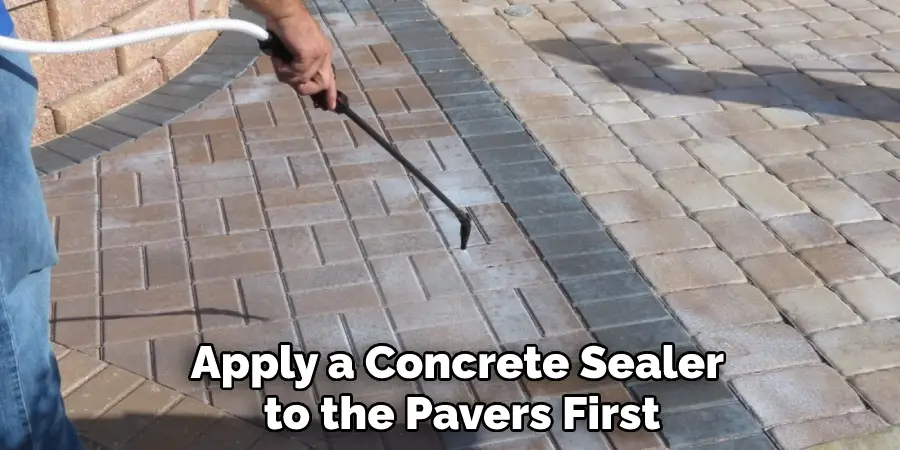
9 Methods How to Paint Pavers a Different Color
1. Chalk paint
Chalk paint is a type of paint that can be used to give pavers a matte, distressed look. To use chalk paint, simply apply it to the pavers with a brush or roller and then allow it to dry. Once the paint is dry, you can then sand the pavers to create a distressed effect.
For a more professional look, you can also use a sealer to protect the paint from fading and weathering. If you want to give the pavers a unique design, you can also use stencils and painter’s tape to create shapes or patterns on the pavers.
2. Acrylic paint
Acrylic paint is another type of paint that can be used on pavers. It is water-based paint, so it can be easily cleaned up with soap and water. This type of paint comes in many colors, which allows for more creative freedom in painting pavers. Acrylic paint is also weather resistant, so it won’t fade or chip in extreme temperatures or from heavy rain or snow.
When applying acrylic paint to pavers, be sure to apply multiple thin coats for the best results. Allow each coat to dry completely before adding the next one. Once you have achieved the desired color, seal the paint with a clear acrylic sealer or an outdoor polyurethane. This will help protect the painted pavers and make them last longer.
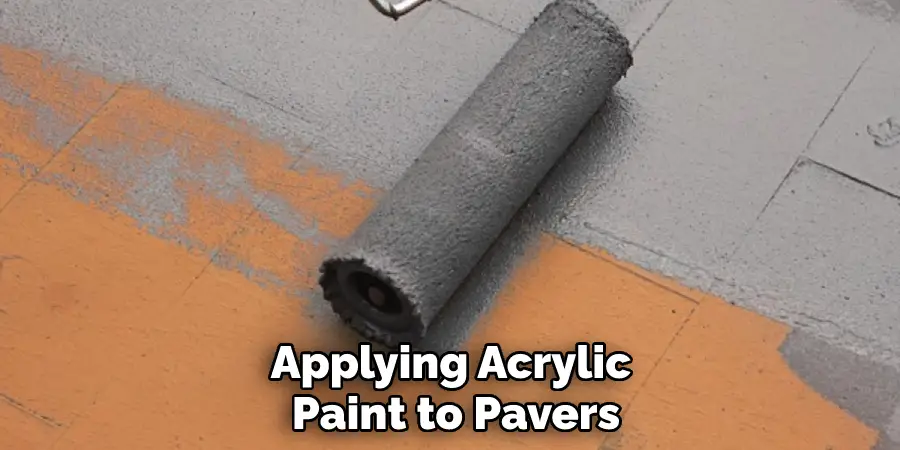
3. Latex paint
Latex paint is another option that can be used on pavers. It is less durable than epoxy but can still hold up against weather and wear. Latex paint should be applied with a thin coat of primer first. This will help ensure that the paint sticks to the pavers and creates a smooth finish. Once dry, you will need to apply two or three coats of latex paint for the best coverage.
Be sure to let the paint dry completely between each coat. When done, seal the pavers with a clear acrylic sealer to help protect them from the elements. Though not as durable, latex paint can still provide a good color change for your pavers.
4. Enamel paint
Enamel paint is another option that can be used on pavers. It is a type of oil-based paint that provides extra protection and durability. This type of paint will require more prep work, as it must be applied to clean and dry pavers with proper primers and sealants in place. The benefits, however, are worth the extra effort.
Enamel paint can also provide superior resistance to fading due to ultraviolet light, making it an ideal choice for outdoor surfaces. Additionally, this paint offers superior adhesion and durability than other types of paint, meaning it will last longer. Be sure to use a high-quality brush and roller for the best results when applying enamel paint.
5. Epoxy resin
Epoxy resin is a clear coating that can be used on pavers to give them a glossy finish. To use epoxy resin, simply apply it to the pavers with a brush or roller and then allow it to dry. Once the resin is dry, you can then sand the pavers to create a distressed effect.
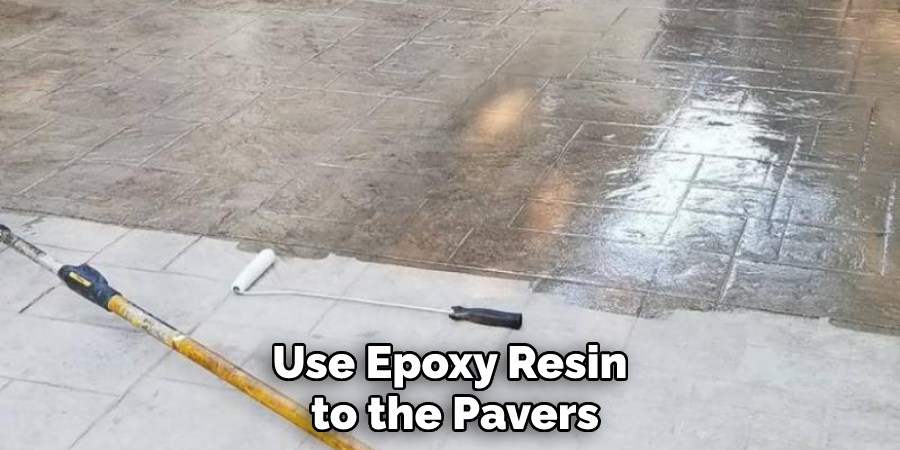
It is important to note that epoxy resin can be difficult to work with, so it is best to consult a professional before attempting this method. Additionally, the epoxy will need to be reapplied every few years in order to maintain its durability and color vibrancy.
6. Polyurethane
Polyurethane is another clear coating that can be used on pavers. This coating is highly resistant to moisture and oil, making it ideal for protecting pavers from the elements. Polyurethane will also enhance the color of the pavers and make them shine. To apply polyurethane, first, use a brush to remove any dirt or debris that may be on the surface of the paver.
Next, apply the coating with a roller, brush, or sprayer and allow it to dry completely. Once the polyurethane has dried, you can apply an additional layer for extra protection. For best results, be sure to read and follow all manufacturer’s instructions before starting.
7. Stain
Stains can be used to give a versa dark, rich coloration. To use stain, simply apply it to the pavers with a brush or roller and then allow it to dry. Once the stain is dry, you can then sand the pavers to create a distressed effect. Make sure to apply a sealer to protect the stained pavers from fading, staining, and wear.
If you want a more even color, you can use a tinted sealer or two coats of stain to achieve the desired effect. Although staining can be a bit more expensive than paint, it will last longer and requires less maintenance.
8. Concrete dyes
Concrete dyes are a great way to give pavers a vibrant, long-lasting color without the need for painting. Dyes are specifically formulated to penetrate deep into the concrete, creating a permanent bond that won’t fade or peel over time.
The only downside of using dyes is that they require more effort than other painting methods, as the dye must be applied evenly and with precision in order for it to look its best.
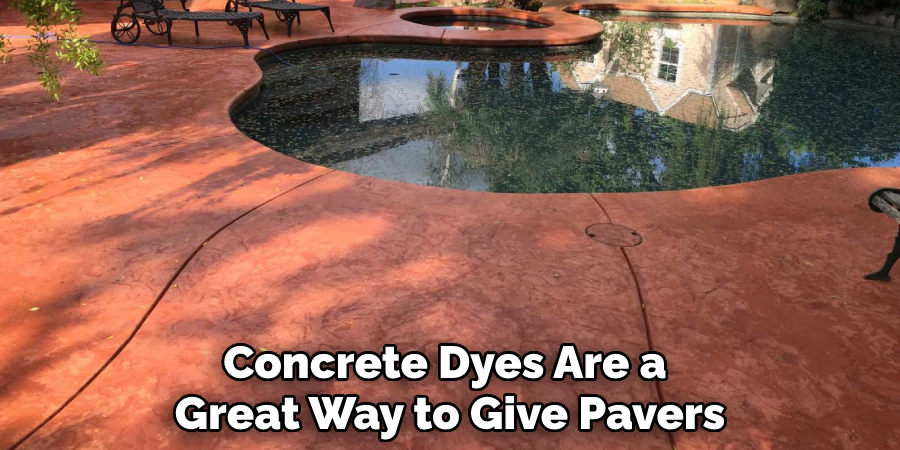
To apply the dye, you’ll need to first make sure that your pavers are clean and dry. Then, you’ll need to mix the dye with an appropriate solvent, such as water or acetone. Once mixed, you can apply the dye using a brush, roller, or sprayer. Apply several thin coats until the desired color is achieved.
9. Gels
Gels are a great way to create an aged look on pavers without the need for painting. To use gels, simply apply them to the pavers with a brush or roller and then allow them to dry completely before sealing. Gels come in different colors, so you can choose the shades that best complement your outdoor space.
Be sure to cover any plants or furniture with a plastic tarp before applying the gel to prevent any damage from occurring. Once the gels have dried and been sealed, they will last for several years without requiring any additional maintenance. If you’re looking to make a bold statement with your pavers, gels are an excellent option.
Conclusion
Chances are that you have some pavers on your property that could use a little updating. Whether they’re part of your patio, walkway, driveway, or pool deck, painting pavers is a great way to give them a new look without having to replace them entirely.
Keep in mind, though, that before you get started, you’ll want to clean the pavers thoroughly and repair any cracks or damage. Once that’s done, simply select the paint color of your choice and get to work! Thanks for reading our blog post on how to paint pavers a different color! We hope you found it helpful and informative. Happy painting!
About
Outdoor Fixes is a distinguished figure in the world of Diy design, with a decade of expertise creating innovative and sustainable Diy solutions.
His professional focus lies in merging traditional craftsmanship with modern manufacturing techniques,
fostering designs that are both practical and environmentally conscious. As the author of diy,
outdoorfixes delves into the art and science of outdoorfixes-making, inspiring artisans and industry professionals alike.
Education RMIT University
(Melbourne, Australia) Associate Degree in Design (Outdoor Fixes) Focus on sustainable design, industry-driven projects,
and practical craftsmanship. Gained hands-on experience with traditional and digital manufacturing tools, such as CAD and CNC software.
Nottingham Trent University
(United Kingdom) Bachelor’s in outdoorfixes.com and Product Design (Honors) Specialized in product design with a focus on blending creativity with production
techniques. Participated in industry projects, working with companies like John Lewis and Vitsoe to gain real-world insights.
Publications and Impact
In diy, Outdoor Fixes his insights on indoor design processes, materials, and strategies for efficient production.
His writing bridges the gap between artisan knowledge and modern industry needs, making it a must-read for both budding designers and seasoned professionals.

